How OpenSCAD and parametric design can help in 3D printing
Sometimes you have to change a little aspect, as the text or one or more dimensions, of your object before printing. In these cases you can model from zero your object or try to edit it directly in your software. With OpenSCAD and the parametric design you have to simply edit a text or a variable in a editor and after a render you can save the STL file, ready to the slicer! I will show you two examples that have facilitated my life.
I am not an OpenSCAD
So I have adapted two things downloaded from Thingiverse
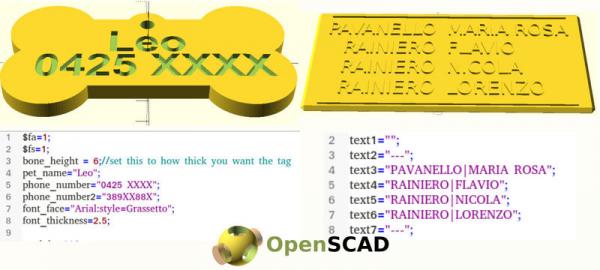
Dog Tag
The metal tag of my dog was broken and it was necessary that my dog has new one, because he usually tries escape from my garden and goes into the public streets. So I do another one this time with my 3D printer. I found Reinforced Dog Tag on Thingiverse. I changed some dimensions of it and added the back side in order to have two different phone numbers, this is my final and adapted version:
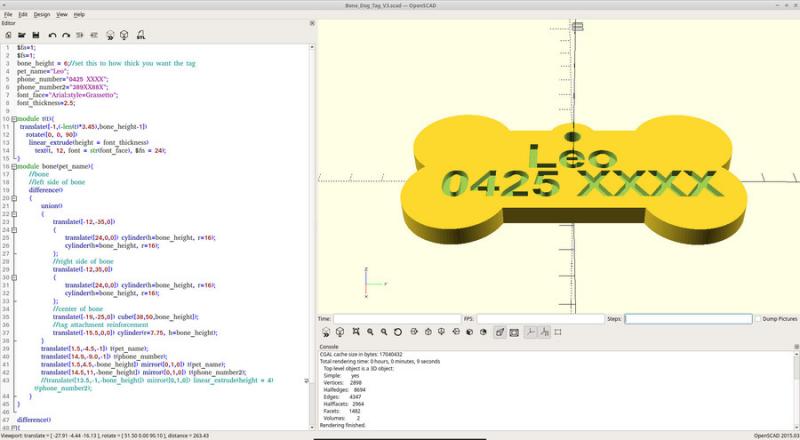
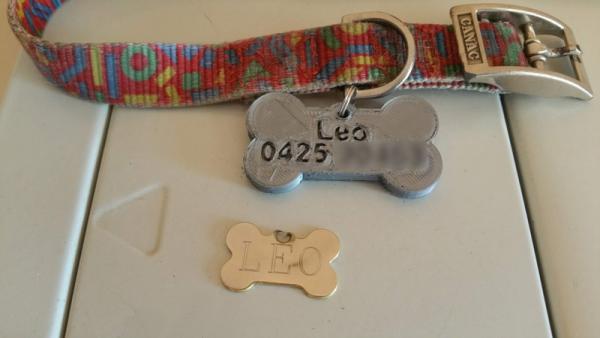
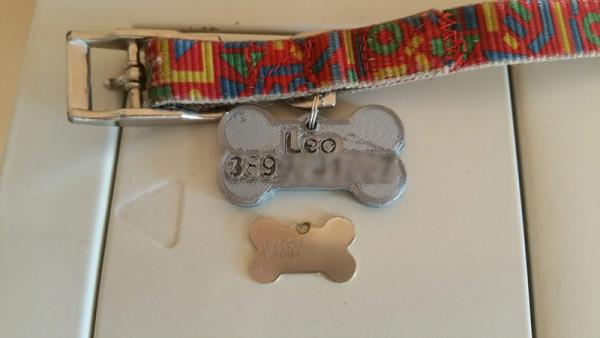
My modified script (in bold my changes):
$fa=1;
$fs=1;
bone_height = 6;//set this to how thick you want the tag
pet_name="Leo";
phone_number="0425 XXXX";
phone_number2="389XX88X";
font_face="Arial:style=Grassetto";
font_thickness=2.5;
module t(t){
translate([-1,(-len(t)*3.45),bone_height-1])
rotate([0, 0, 90])
linear_extrude(height = font_thickness)
text(t, 12, font = str(font_face), $fn = 24);
}
module bone(pet_name){
//bone
//left side of bone
difference()
{
union()
{
translate([-12,-35,0])
{
translate([24,0,0]) cylinder(h=bone_height, r=16);
cylinder(h=bone_height, r=16);
};
//right side of bone
translate([-12,35,0])
{
translate([24,0,0]) cylinder(h=bone_height, r=16);
cylinder(h=bone_height, r=16);
};
//center of bone
translate([-19,-25,0]) cube([38,50,bone_height]);
//tag attachment reinforcement
translate([-15.5,0,0]) cylinder(r=7.75, h=bone_height);
}
translate([1.5,-4.5,-1]) t(pet_name);
translate([14.9,-9.0,-1]) t(phone_number);
translate([1.5,4.5,-bone_height]) mirror([0,1,0]) t(pet_name);
translate([14.5,11,-bone_height]) mirror([0,1,0]) t(phone_number2);
}
}
difference()
{
//tag
bone(pet_name);
//tag attachment
translate([-15.5,0,-1]) cylinder(r=2.75, h=((bone_height)+2));
}
Label for mailbox
I usually put a paper label on my outdoor mailbox, but I needed a new one more strong, maybe printed in grey PLA
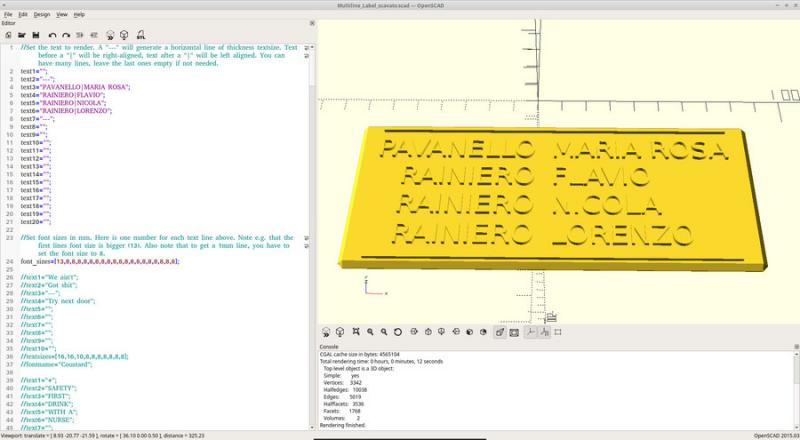
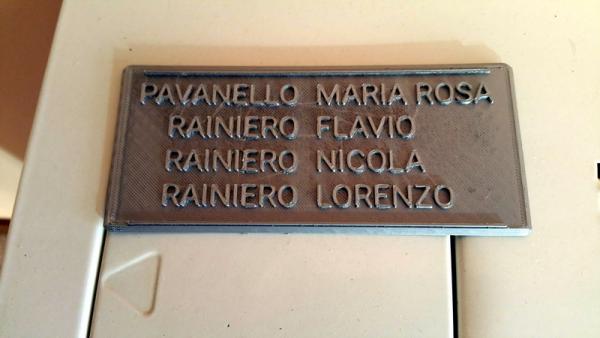














Aggiungi un commento